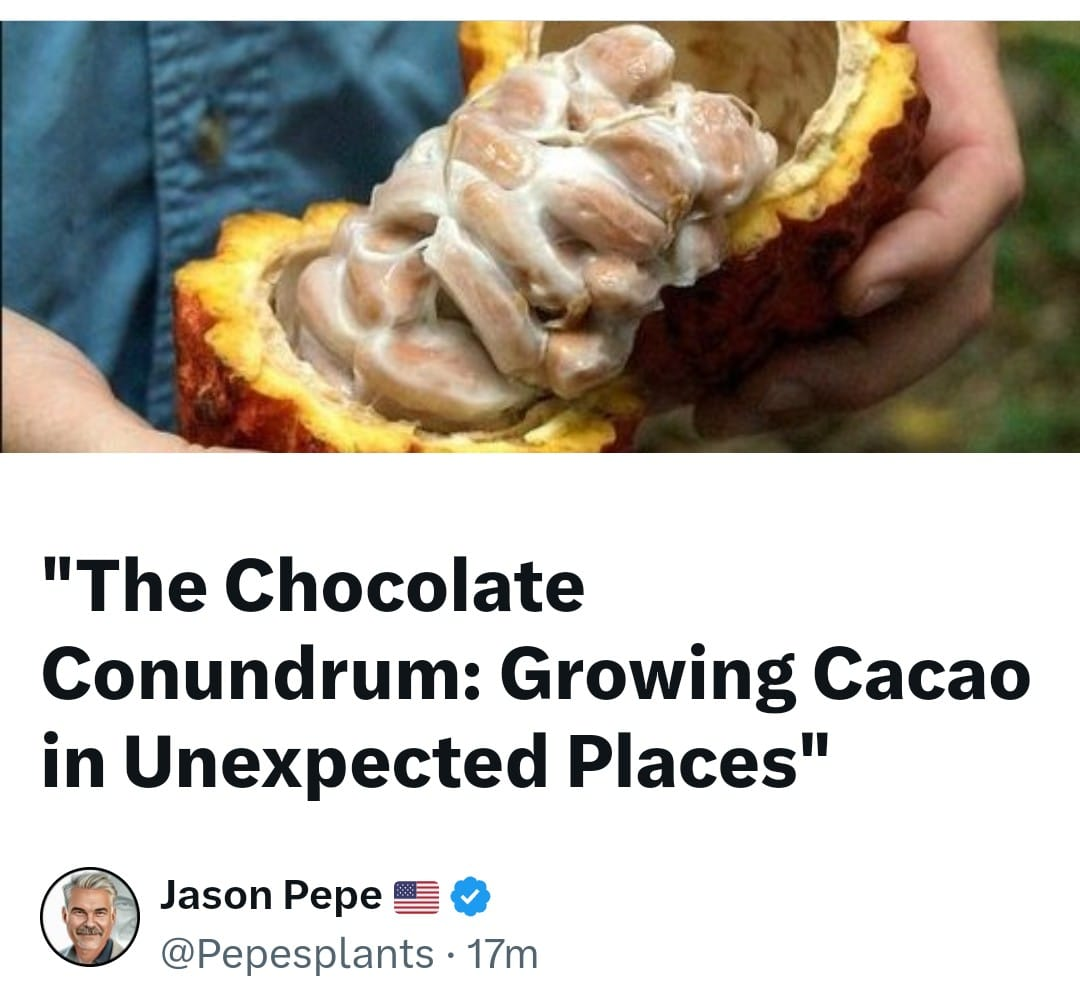Sunday, December 29, 2024
Wednesday, December 25, 2024
Sunday, November 24, 2024
Sunday, July 28, 2024
Saturday, July 27, 2024
Sunday, July 07, 2024
Tuesday, July 02, 2024
So, If you're determined to cultivate this finicky tropical tree in less-than-ideal conditions, I'll do my best to guide you through the process.
First, let's address the elephant in the room: cacao trees are native to the humid, lowland tropics. They thrive in the shade of the rainforest canopy, basking in temperatures between 20°C and 32°C (68°F to 90°F). Trying to grow them in your backyard in the middle of Texas or Kansas is like asking a penguin to move to the Sahara. But if you're up for the challenge, let's dive in!
Ground or container? That's the million-dollar question. Here's the lowdown:
Ground: If you live in a region with a climate similar to the tropics (think South Florida or Southern Louisiana), you might be able to get away with planting cacao trees directly in the ground. But even then, you'll need to create a microclimate that mimics the rainforest environment. This means providing plenty of shade, humidity, and well-draining soil rich in organic matter. Think of it as creating a mini rainforest in your backyard. That task is challenging but completely possible if your climate is warm and your rainfall is steady.
Container: For those of us who don't live in a tropical paradise, growing cacao in containers might be a more viable option. You'll need a large, well-draining pot and a potting mix specifically designed for tropical plants. Keep the soil consistently moist but not soggy, and provide plenty of bright, indirect light. Think of it as creating a mini rainforest in a pot.
Cacao trees are cold and wind sensitive. Most all literature I have found on growing cacao makes this statement. "When the trees are subjected to temperatures below 15°C (59°F) they can be severely damaged and may die." In the real world, from my actual experience, the cacao trees I have grown in South Florida can survive much colder temperatures. I have had trees endure several days of temperatures 1.1°C (34°F). These temperatures caused severe leaf damage but the trees bounced back fairly quickly. When faced with these temperatures a good strategy is to provide some source of heat. Propane heaters or smudge pots may be the way to keep the trees warm. Citrus growers have used these heating methods with success. At some point I will probably need to use heating as well.
A green house sized approximately 10' x 12' and 9' can accommodate two trees easily. The top and sides of the greenhouse will need to be covered with shade cloth to reduce the sunlight by at least 50 percent. Be sure to have ventilation available to control the temperature. You will need, in the majority, of cases two trees for cross pollination since some trees are not self compatible with their own pollen. Hand pollination may also be required. More on that topic later in future articles.
Cacao trees grown from seed can take up to five years to produce fruit, but many trees will often begin to develop cacao pods in the third year.
No matter which method you choose, be prepared for a challenging journey. The degree of difficulty depends on your climate and how well you recreate the natural environment of the tree.
https://www.pepesplants.com
Friday, June 14, 2024
Thursday, June 13, 2024
Subscribe to:
Comments (Atom)

